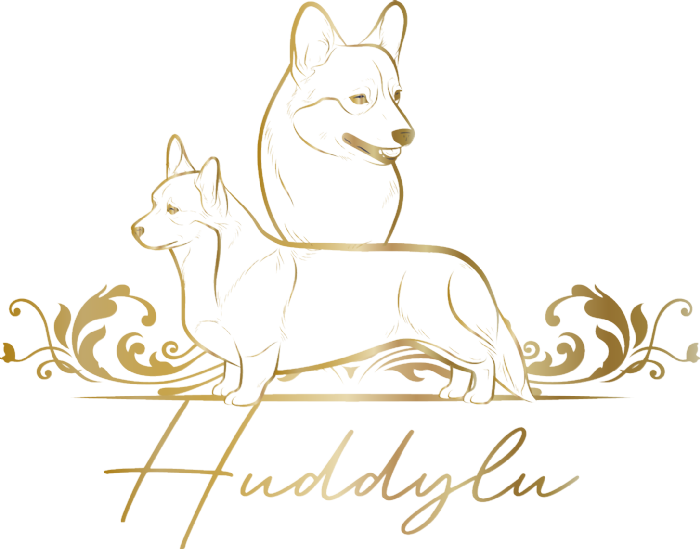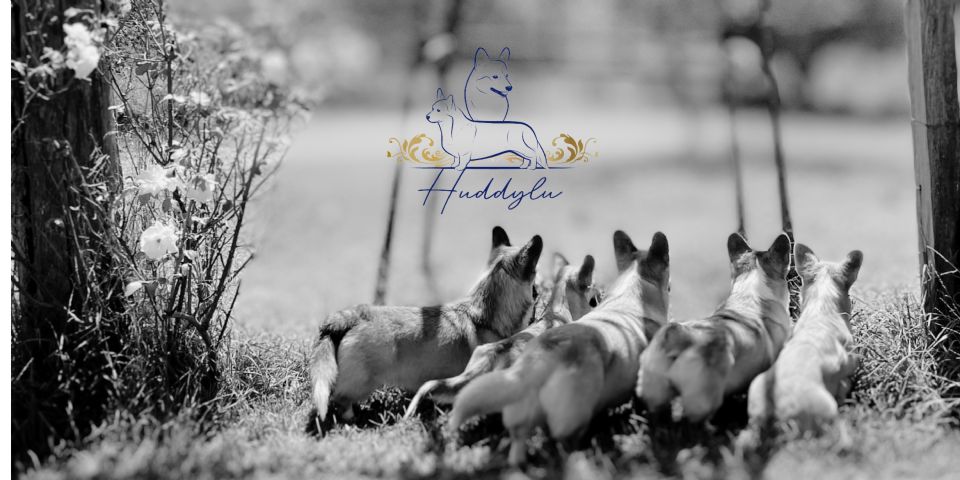About the Pembroke Welsh Corgi

Photograph by Jeff Dillon Photography
History
The Pembroke Welsh Corgi’s origins are not all that clear but it is believed that they were first bred in Pembrokeshire in Southern Wales, and it is theorised that they are combination of the local herding dogs such as the Lancashire Healer, and the Spitz derived breeds that were brought to the Pembrokeshire coast by the Vikings in the 12th century, such as the Swedish Valhund, Schipperke, Keeshond and perhaps even the Pomeranian.
Whatever his background, the final product gained significant popularity amongst the Welsh farmers for many centuries, being a sturdy little athletic dog, proficient in watching over and corralling the cattle, guarding their homesteads and keeping the rats and other small vermin off the property with their innate desire to catch prey, combined with their tenacity and intelligence making them effective hunters. A real all-round asset to any farm!
They were particularly valued for their work with herding cattle due to their low stature, agility and intelligence. They would drive the cattle by nipping at the heels, and by staying low through their drive, they were able to avoid kicks.
"A good dog on the ground's worth three in the saddle." - Sturgill Simpson
Intelligence
They are quick learners and are known for their problem solving ability. They will excel in most any training, canine sports and activities such as agility, rally, obedience and herding trials.
Mental stimulation through training and interactive activities are essential to keep them engaged.
Loyalty and protective instincts
The Pembroke Welsh Corgi are loyal and affectionate companions. They form strong bonds with their masters, and make great family pets or even therapy dogs. They are known for their alertness and watchdog abilities.
Exercise needs
The corgi has moderate exercise needs. They enjoy a daily walk, playtime and activities that stimulate his mind and body. He is a working dog after all, and longs for the thrill of the chase: playing keep-away, tug-o-war etc, gives your corgi the satisfaction of capturing an object, similar to hunting prey in the wild. These games give your dog a surge of adrenaline and excitement in a simulated struggle for dominance over the toy or object.
Health concerns
Pembroke Welsh Corgis are generally healthy dogs, but they can be prone to health issues including Hip Dysplasia, Degenerative Myelopathy (DM) and Invertebral Disc Disease (IVDD). Responsible breeding practices, regular veterinary check-ups and maintaining a healthy weight can help mitigate these risks.
Coat / Shedding
Pembrokes are a medium length, double-coated breed. They shed moderately year-round, and heavily twice a year with seasonal change. Regular grooming practices such as regular brushing, combing, bathing and blowdrying can help keep shedding at bay.
A corgi’s coat should never be trimmed or shaved.
Coat colour variations include Red & White, Sable, Tri-colour (black, red & white).
Any deviations from the above would insinuate a cross-bred, for example, blue merle is an indication of a Pembroke x Cardigan and is an example of poor breeding practices.
Lifespan
Pembroke corgis have a lifespan of around 12-15 years. Proper nutrition, regular exercise, appropriate veterinary and dental care should all help contribute to the longevity of your corgi.
"Dogs' lives are too short, their only fault, really." - Agnes Sligh Turnbull
Tails / Natural Bobtails / Docked Tails
You may have noticed that some corgis have tails, some have a bobtail, and some have pretty much nothing.
Pembrokes were historically docked, to ensure that cattle would not trample their tail whilst herding, likewise, for the purpose that if a corgi should happen across the boundary of a neighbouring property, the neighbour would not mistake it for a fox at a distance and shoot it.
Nowadays, a more domesticated breed, there is really no need to dock for these purposes.
And just as well, for animal welfare purposes in 2002 tail docking became illegal in Australia. For this reason, a vast majority of Pembrokes in Australia now have long tails.
You may still see a natural bobtail (NBT) corgi in Australia, or, even docked dogs that have been imported from an overseas country where docking is still legal (USA, Russia, Japan etc).
The natural bobtail (NBT) gene variant is inherited in an Autosomal Dominant fashion meaning only one copy of the gene variant is required to produce a natural bobtail.
Length of the natural bobtail is variable; some NBT puppies may be born with nearly full-length tails while others may have virtually no tail.
This is one of the reasons that I have a personal preference to avoid using the natural bobtail gene pool in my breeding, as the length variability is too undesirable for me.

DogsNSW breeder registration number: 2100106034, NSW Pet Registry Breeder Idenfication Number (BIN): B001091818
Contact Details
Kayla GrannallYass, NSW, Australia
